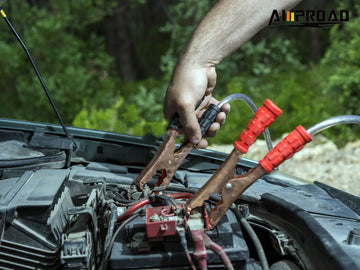Jump starting a diesel car with a petrol (gasoline) car is generally not recommended due to fundamental differences between these two types of engines and their electrical systems. Understanding these differences and the potential risks involved is crucial for making an informed decision when faced with a dead diesel car battery. In this comprehensive article, we will explore the reasons why it's not advisable to use a petrol car to jump start a diesel vehicle, outline safer alternatives, and provide essential safety precautions to follow if you find yourself needing to jump start any car.
Understanding the Differences Between Diesel and Petrol Engines
Fuel Systems
Diesel and petrol engines operate on different principles. Diesel engines rely on compression to ignite fuel, while petrol engines use spark plugs. The higher compression ratio in diesel engines means they require more robust components to handle the increased pressure. This fundamental difference extends to the electrical systems designed to support these engines.
Voltage Differences
Diesel batteries often have slightly higher voltage requirements compared to petrol car batteries. A typical diesel engine battery might require more power to crank the engine due to its higher compression ratio. Although the voltage difference might not be substantial enough to cause immediate damage when using a petrol car's battery to jump start a diesel engine, it can affect the performance and lifespan of both batteries over time. The petrol car’s electrical system may not be equipped to deliver the necessary voltage and cranking power needed by a diesel engine.
Cranking Power
One of the most significant challenges in jump starting a diesel car with a petrol car is the cranking power required. Diesel engines need more cranking power to start because of their higher compression ratios. A petrol car's battery is typically not designed to provide the amount of power required to crank a diesel engine effectively. This mismatch can lead to unsuccessful jump starts and potential damage to the petrol car's battery and electrical system.
Alternatives to Jump Starting a Diesel Car
Given the potential issues and risks involved, it’s important to consider safer alternatives when jump starting a diesel car:
Use a Jump Starter Designed for Diesel Engines
Portable jump starters specifically designed for diesel engines are an excellent solution. These devices such as AMPROAD iRock40 jump starter are built to deliver the necessary cranking power for diesel engines, ensuring a safer and more effective jump start. When selecting a jump starter, make sure it is rated for the engine size of your diesel vehicle.
Seek Help from Another Diesel Vehicle
If a portable vehicle booster pack is not available, the next best option is to seek help from another diesel vehicle. Using jumper cables compatible with both vehicles, you can safely transfer the needed power. This method ensures that the cranking power and voltage requirements are adequately met.
Call for Roadside Assistance
If you’re unable to access a diesel vehicle or a suitable jump starter, calling for roadside assistance is a reliable option. Professional services are equipped with the necessary tools and expertise to safely jump start your diesel car without causing damage to the electrical system.
Safety Precautions
Whether you are using a compatible vehicle or a portable jump starter, knowing how to boost a car and following proper safety precautions is crucial:
-
Park Both Vehicles Close Together But Not Touching
- Position the vehicles so that the jumper cables can reach both batteries comfortably without the vehicles touching. This prevents any electrical discharge between the vehicles.
-
Ensure Both Vehicles Are Turned Off and Parking Brakes Are Engaged
- Turn off the engines and engage the parking brakes to prevent any unintended movement during the jump starting process.
-
Follow the Correct Procedure for Connecting Jumper Cables
- Connect the red (positive) clamp to the positive terminal of the dead battery.
- Attach the other red (positive) clamp to the positive terminal of the donor battery.
- Connect the black (negative) clamp to the negative terminal of the donor battery.
- Attach the final black (negative) clamp to an unpainted metal surface on the engine block or frame of the dead vehicle. This acts as a grounding point and helps prevent sparks near the battery.
-
Start the Donor Vehicle and Let It Run for a Few Minutes
- Allow the donor vehicle to run for a few minutes to charge the dead battery. This process helps build enough charge in the dead battery to attempt starting the vehicle.
-
Attempt to Start the Diesel Car
- Try starting the diesel car. If it doesn’t start immediately, wait a few more minutes and try again. Do not attempt to start the car more than a few times to avoid damaging the electrical systems.
-
If the Diesel Car Doesn’t Start, Seek Professional Help
- If the car doesn’t start after a few attempts, there might be a more serious underlying issue. At this point, it’s best to call for professional assistance to diagnose and resolve the problem.
Don't Mix and Match!
While it might be tempting to use a petrol car to jump start a diesel vehicle in a pinch, the differences in fuel systems, voltage requirements, and cranking power make this a less than ideal solution. Instead, using a booster batterie specifically designed for diesel engines, seeking help from another diesel vehicle, or calling for roadside assistance are safer and more effective alternatives. Always prioritize safety by following proper procedures and taking necessary precautions when jump starting any vehicle.
By understanding the unique needs of diesel engines and the risks involved with using petrol car batteries, you can make informed decisions and ensure that your vehicle is started safely and effectively. Whether you invest in a reliable jump starter or have a plan for roadside assistance, being prepared can save you time, money, and potential damage to your vehicle’s electrical system.

